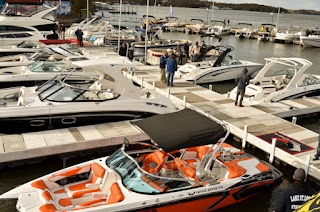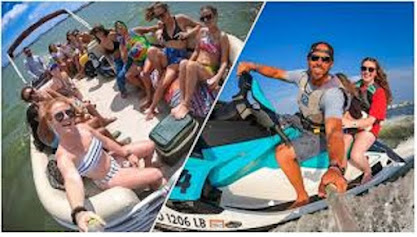Whether to Boat Depends on the Weather
When it comes to safe boating and weather, we seek balance. Enjoying the ever-changing environment is among boating’s lures. But keeping a “weather eye”—watching for storms, waves, winds, cold and heat—helps keep the fun safe. And so, we need to balance fun day on the water with a healthy dollop of caution.
On the evening of July 19, 2018, a duck boat operated by Ride the Ducks sank on Table Rock Lake in the Ozarks near Branson, Missouri, in the United States. The amphibious vehicle sank with 31 people on board, leaving 17 dead, during high winds associated with nearby severe thunderstorms.
I was interviewed by the United States Coast Guard about that tragic event. One of the many question they asked was how important is the monitoring of the weather and how frequently do you monitor the weather during a charter.
The answer to how important it is to monitor the weather as to the safety of the passengers, crew it is top of the list. As to how frequently to monitor the weather, before, during and after the outing, in other words constantly.
Boating on large bodies of water offers many challenges. one of them is the weather impact. The Lake of the Ozarks is 93 miles in length with 1150 plus miles of shoreline. We are surrounded by foot hills and the lake is fed by several tributaries.
With that you can be in sunshine in one part of the lake and rain and high wind in another. The weather can and will change quickly.
The U.S. Coast Guard, in its “A Boater’s Guide to the Federal Requirements for Recreational Boats,” offers these clues to an approaching weather change, which usually brings the most challenging conditions.
Signs of bad weather approaching for boaters:
- Flat clouds getting lower and thicker;
- Puffy, vertically rising clouds getting higher;
- Dark, threatening clouds, especially to the west/southwest;
- A sudden drop in temperature;
- A halo around the sun or moon;
- Increasing wind or a sudden change in wind direction;
- Flashes on the horizon;
- Seas becoming heavy;
- Heavy AM radio static, which can indicate nearby thunderstorm activity.
f caught in severe weather, the Coast Guard advises:
- Reduce speed to the minimum that allows continued headway;
- Make sure everyone on board is wearing their life jacket;
- Turn on running lights;
- If possible, head for nearest safe-to-approach shore;
- Head boat into waves at a 45-degree angle;
- Keep bilges free of water;
- Seat passengers on the bottom of the boat, near the centerline
- If the engine fails, deploy a sea anchor (or bucket if there’s no sea anchor aboard) from the bow;
- Anchor the boat if necessary.




Comments
Post a Comment